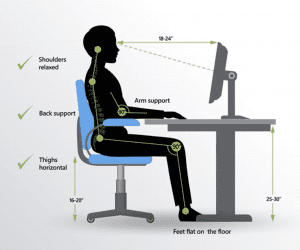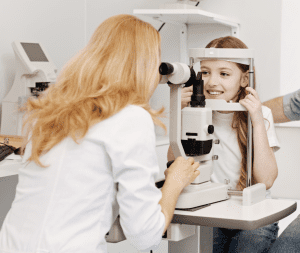28 Aug Protecting Your Child’s Eyes During The Coronavirus Pandemic
Posted at 15:24h
in
Blog
by OpticalRooms
Protecting Your Child’s Eyes During The Coronavirus Pandemic.
The coronavirus pandemic has transformed the way our children learn, and it could be having an impact on their eyes. With online remote learning becoming the norm, children are spending more and more time in front of computers.
Many parents are relaxing screen-time rules for TV and video games in a bid to keep kids occupied while social distancing, as a result, many children are spending less time playing outdoors. More time in front of screens, whether for school, or for fun, can result in eyestrain, fatigue, headaches, dry eyes resulting from blinking less whilst staring at screens, and even an increase in the prevalence of myopia. Excessive blinking, eye rubbing and a child feeling tired or cranky can also be potential warning signs that they are having vision trouble.
How to help build an eye health lifestyle at home.

Correct workstation posture
A comfortable workstation is vital. Keep a safe distance from devices. We tend to view devices at too close a distance. This requires our eyes to focus harder in order to keep the image sharp, which can cause strain and potentially worsen myopia. Laptops should be viewed at arm’s length, about 18 to 24 inches from where they are sitting. Monitors should ideally be positioned at eye level, directly in front of the body. Tablets should be held at arm’s length. Avoid using devices outside or in brightly lit areas, or in dark rooms. To help reduce glare, light sources should be positioned to the side, rather than in front of or behind the screen.
Take regular breaks. Parents can help by carefully managing their children’s screen time to support educational use while limiting cartoons and video games. It is important to have clear rules and set limits on screen time. The World Health Organisation recommends that children under 5 spend one hour or less per day on digital devices, and children under 1 spend no time, on digital devices.
We don’t blink as often while using computers and digital devices (5 to 10 times less per minute), as a result eyes can become dry and irritated. When we focus at the same distance for a prolonged time, it can cause the muscles around the eyes to tire, leading to headaches, blurred vision and tired, dry eyes.

Working distance
It is recommended to follow the 20/20/20 rule, every 20 minutes look up at something 20 feet away for at least 20 seconds. This gives eyes a break and a return to their natural position. A timer can be useful to remind your child to take a break every 20 minutes. Eye drops which act as a lubricant and are non medicated are worth considering if the child is experiencing discomfort after using digital devices.
Devices should be put away at least 60 minutes before bedtime. Blue light emitted from screens can disrupt sleep, night mode function on devices should be utilised to reduce this blue light exposure.
Consider blue filtering lenses if your child wears glasses to reduce the amount of blue light the child absorbs. A screen filter can be fitted also for children that do not use glasses.
Spend more time outdoors. Scientists are still trying to understand how
myopia develops and progresses. It occurs when the eyeball is too long or the eye’s focussing power is too strong, causing light rays to focus in front of the retina, instead of on it, creating a blurry image. Myopia increases a child’s future risk of developing a number of different eye conditions, such as glaucoma, retinal detachment and macular degeneration. Genetic factors which influence whether a child develops myopia are out of a parents control but research shows other risk factors can be reduced. Studies suggest that spending time outdoors may be able to slow the onset and progression of myopia. It is not clear why outdoors time protects against myopia. One theory is that sunlight creates a release of dopamine from the retina, and that dopamine slows down the growth of the eyes.
See previous
blog article on the latest information on the global explosion in myopia in children
Kids who can’t see well often struggle at school.

Regular eye test for Children
Eye exams are essential to identifying potential issues with children’s eyesight and shouldn’t be put off just because of the pandemic. Check with your optometrist for their guidelines and safety protocols for seeing patients- some may even be able to do initial screenings virtually.



